Taking a walk in northwest part of Taipei can be a migration through a cultural revitalization of the neighborhood.
Start off at Shin Leh Yuan Gallery with its current exhibition City of Swallows:
Migration, Post-colonial Memory and New Taiwan Color which continues on Zhongshan North Road and ends up at the SPOT-Taipei Film House. Curator Elsa Chen (陳香君) explores the idea of migration as seen through the eyes of Taiwanese artists, filmmakers and activists and a comic book artist from Hong Kong. The gallery provides headsets with audio tours of the exhibition in Mandarin, Hokklo, Hakka, English, Thai, Indonesian and Vietnamese.
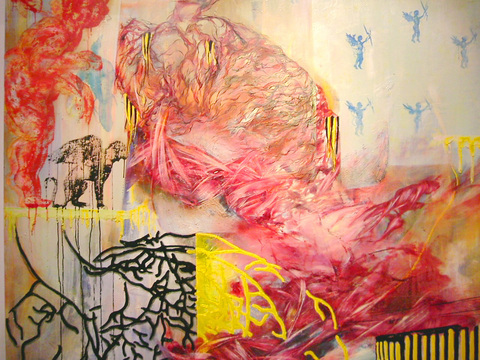
PHOTOS: SUSAN KENDZULAK
At Shin Leh Yuan Art Gallery, there is filmmaker Mia Chen's (
At St Christopher's Church, Lin Hsiao-fang's (
Taking it to the streets, Yin Pao-ning (殷寶寧) placed sofas and bar stools at various spots along Zhongshan North Road.
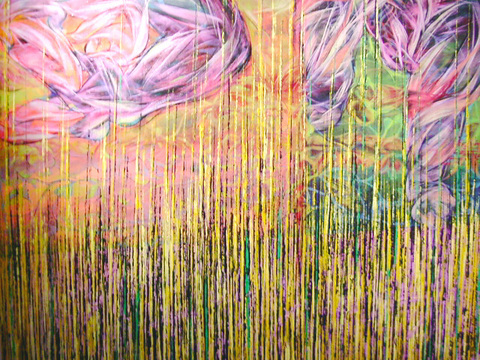
Additionally, the exhibition has an ongoing series of panel discussions from 2:30pm to 5pm at Room D, Zhongshan District Community Centre, 2F, 21, Lane 59, Sec 2, Zhongshan N Rd. On Sunday, Taiwan is Becoming Home: Documentary Films and the Intervention in the Condition of New Immigrants is the heady topic for a scheduled talk led by artists and academics. For April 9 the topic is Contemporary Taiwan and Imperialist Gaze: Post-colonial Memory and Aesthetic Transformation.
An exhibition of more traditional white-cube fare can be found at IT Park. Painter Juin Shieh (
A couple of doors down is the newly opened artist-run VT Salon. Besides being an elegant lounge bar, it exhibits the latest in contemporary Taiwanese art. A gray cement minimalist feel to the interior sets the sophisticated tone for the works on view. Howard Chen's (陳浚豪) shiny thumbtack mandala wallpiece appropriately fits in along with the pseudo-architectural bas-reliefs of Tu Wei-cheng (涂維政). And since it is a darkened ambient space, video projections work quite well and for Very Video 100, various videos by local artists will be shown. Wu Dar-kuen's (吳達坤) latest video of a topsy-turvey New York lends an other-worldness to the room. This group collaboration shows that art does not only belong to the realm of the daytime well-lit gallery but that it can become a nighttime denizen too.
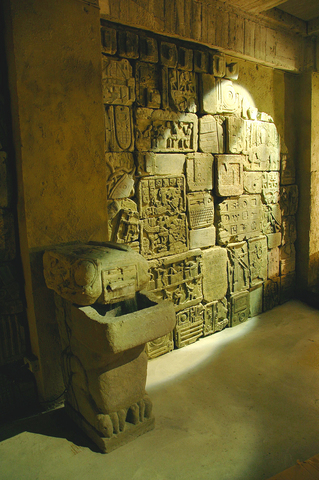
PHOTO COURTESY OF VT SALON
What: City of Swallows: Migration, Post-colonial Memory and New Taiwan Color
Where: Shin Leh Yuan Art Gallery, 1F, 15-2, Lane 11, Zhongshan N Rd Sec 2, Taipei (
When: At SPOT from 11am until 9pm Tuesday through Sunday; at Shin Leh Yuan Art Gallery from 1pm until 8pm Weds through Sun, call (02) 2561 1548 for more details; until April 9
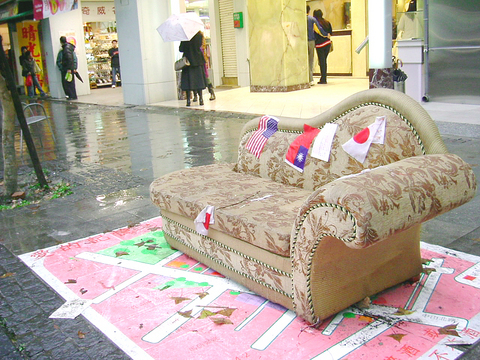
PHOTO: SUSAN KENDZULAK
What: From Chora to Female Pedigree by Juin Shieh (
Where: IT Park, 2/3 F, 41 I-Tong St, Taipei (
Telephone: (02) 2507 7243
When: Tues to Sat, 1pm to 10pm through April 15
What: Very Video 100
Where: VT Salon, 45-47, I-Tong St, Taipei, Taiwan. (
When: Ongoing
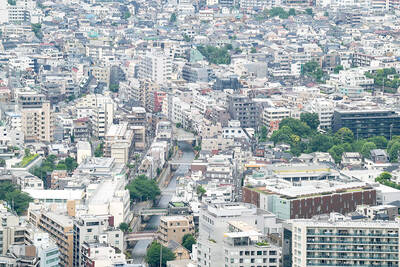
The canonical shot of an East Asian city is a night skyline studded with towering apartment and office buildings, bright with neon and plastic signage, a landscape of energy and modernity. Another classic image is the same city seen from above, in which identical apartment towers march across the city, spilling out over nearby geography, like stylized soldiers colonizing new territory in a board game. Densely populated dynamic conurbations of money, technological innovation and convenience, it is hard to see the cities of East Asia as what they truly are: necropolises. Why is this? The East Asian development model, with
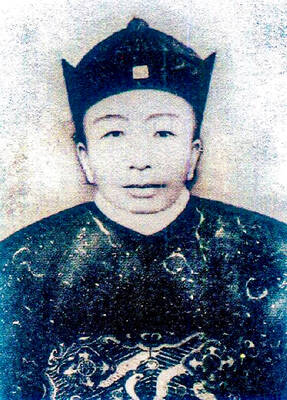
June 16 to June 22 The following flyer appeared on the streets of Hsinchu on June 12, 1895: “Taipei has already fallen to the Japanese barbarians, who have brought great misery to our land and people. We heard that the Japanese occupiers will tax our gardens, our houses, our bodies, and even our chickens, dogs, cows and pigs. They wear their hair wild, carve their teeth, tattoo their foreheads, wear strange clothes and speak a strange language. How can we be ruled by such people?” Posted by civilian militia leader Wu Tang-hsing (吳湯興), it was a call to arms to retake

This is a deeply unsettling period in Taiwan. Uncertainties are everywhere while everyone waits for a small army of other shoes to drop on nearly every front. During challenging times, interesting political changes can happen, yet all three major political parties are beset with scandals, strife and self-inflicted wounds. As the ruling party, the Democratic Progressive Party (DPP) is held accountable for not only the challenges to the party, but also the nation. Taiwan is geopolitically and economically under threat. Domestically, the administration is under siege by the opposition-controlled legislature and growing discontent with what opponents characterize as arrogant, autocratic

When Lisa, 20, laces into her ultra-high heels for her shift at a strip club in Ukraine’s Kharkiv, she knows that aside from dancing, she will have to comfort traumatized soldiers. Since Russia’s 2022 invasion, exhausted troops are the main clientele of the Flash Dancers club in the center of the northeastern city, just 20 kilometers from Russian forces. For some customers, it provides an “escape” from the war, said Valerya Zavatska — a 25-year-old law graduate who runs the club with her mother, an ex-dancer. But many are not there just for the show. They “want to talk about what hurts,” she